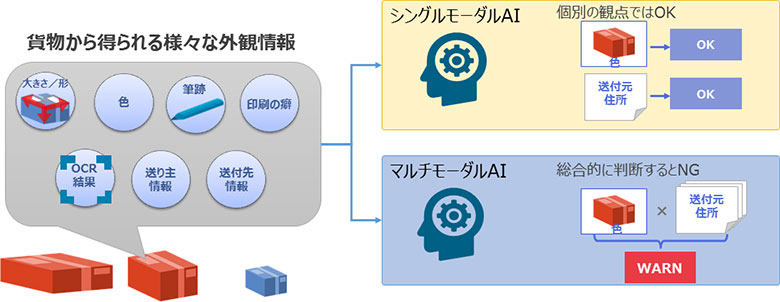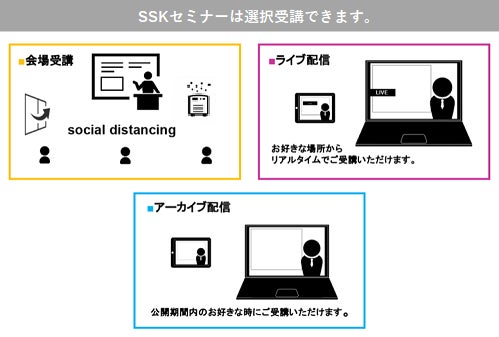Definition and purpose of DX
In order to understand the relationship between DX and ODD, we will explain the meaning of DX once again. When promoting DX, the goal is not only to “introduce the latest technology”, but also what you want to change and how.
Key points for defining and promoting DX
DX stands for Digital Transformation, which literally translates to “digital transformation”. Originally an academic term, this term referred to the development of technologies that improve people's lives.
Since then, it has become a business term for companies making major changes to their products, services and business models, or fundamental changes in market structure due to the development of technology. DX is not just the development of the technology itself, but also the significant impact it has on businesses and markets.
The Ministry of Economy, Trade and Industry defines DX as follows in the “Guidelines for Promoting Digital Transformation (Guidelines for Promoting DX)”.
“In response to rapid changes in the business environment, companies are leveraging data and digital technology to transform their products, services and business models based on the needs of customers and society.
Establish a competitive advantage by transforming our organization, processes and culture.
As noted in this definition, the keyword in DX is “transformation”. DX is about making a big change to something through the use of digital technology and data. Therefore, when promoting DX, we need to think about the answer to the question: “What do we want to change and how?” »
(Related)“DX = computer use” is not the same thing! What is DX that you want to understand correctly? Points of importance and promotion
“Defining the goal of a major transformation” is essential for promoting DX
The development of technology and the use of data have the power to evolve not only a company's business model, but also market structures and society. As our company's mission is to “create a sustainable future through promoting the use of data”, we believe that technology and data can have a “great impact on Japanese society”.
As the saying goes: “The heart of DX is the use of data.” » Using technology and data to promote DX will have a big impact on society by breaking your company's current situation and will produce results in my work. field of business these days, I think it has to do with the desire to improve one's self-esteem and the determination to aim for major change.
On the other hand, if there is another interpretation, if there is no big goal such as “changing society”, the introduction and implementation of technology, which is only originally a means to achieve an objective, will become a simple objective. will end up being a labor-saving measure and it will be difficult to achieve results.
What are the SDGs?Global trends and Japan's action plan
Now let me explain the basics of the SDGs. Let's take a look at the goals set by the United Nations and the types of action plans Japan has in place to meet them. We will also explain the differences between the SDGs and CSR, which have many similarities.
17 SDG goals
SDG is the abbreviation for Sustainable Development Goals, called “Sustainable Development Goals” in Japanese. These are international goals adopted at the United Nations summit in 2015 to aim for a sustainable and better world by 2030. The following 17 goals were defined, pledging to “leave no one behind, for 'development of all and of all regions of the planet'.
Poverty: ending poverty in all its forms, everywhere
・Hunger: ending hunger, achieving food security and better nutrition, and promoting sustainable agriculture.
・Health: ensuring a healthy life and promoting the well-being of all people of all ages
・Education: ensure inclusive and equitable quality education for all and promote lifelong learning opportunities.
・Gender: achieving gender equality and empowering all women and girls
・Water and sanitation: guaranteeing the availability and sustainable management of water and sanitation for all
・Energy: ensuring access for all to affordable, reliable, sustainable and modern energy
・Economic growth and employment: Promote inclusive and sustainable economic growth, full and productive employment and decent work for all.
・Infrastructure, industrialization and innovation: build resilient infrastructure, promote inclusive and sustainable industrialization and promote innovation.
・Inequalities: Correcting inequalities within and between countries
・Sustainable cities: achieving inclusive, safe, resilient and sustainable cities and human settlements
・Sustainable consumption and production: ensuring sustainable consumption and production patterns
・Climate change: take urgent action to reduce climate change and its impacts
・Marine resources: conserve oceans and marine resources and use them sustainably for sustainable development.
・Land resources: protection, restoration and promotion of sustainable use of terrestrial ecosystems, sustainable management of forests, combating desertification, halting and reversing land degradation and halting biodiversity loss.
Peace: Promote peaceful and inclusive societies for sustainable development, ensure access to justice for all and build effective, accountable and inclusive institutions at all levels.
・Means of implementation: strengthening means of implementation, revitalizing global partnerships and achieving the Sustainable Development Goals.
A further 169 targets were set in the 17 areas mentioned above.
How successful is Japan? Challenges and action plans
In Japan, the SDG Promotion Headquarters was established in 2016, headed by the Prime Minister, and the SDG Promotion Roundtable was established under this headquarters, where experts from a wide range of fields exchange ideas. opinions. As a result, the “SDG Action Plan 2020” was released, which includes specific initiatives to be implemented in 2020 to achieve the 2030 goals.
This action plan focuses on the following three points.
I. Business and innovation – Promoting “Society 5.0” linked to the SDGs –
II. Regional revitalization driven by the SDGs and the creation of resilient, environmentally friendly and attractive cities
III. Empowering the next generation and women as bearers of the SDGs
Concerning the relationship with the company, the first point, “Business and Innovation”, is particularly important. Here, in addition to integrating the SDGs into business management and promoting smart agriculture, forestry and fishing, we can see the words “use of ICT research and development , AI and big data”. This point makes us feel the link between the SDGs and the DX.
What is the difference between the SDGs and CSR?
CSR (Corporate Social Responsibility) refers not only to the pursuit of profits and compliance with laws, but also to the responsibility that companies must assume as citizens towards society. The importance of CSR lies in the fact that companies have an obligation to respond appropriately not only to consumers but also to all stakeholders, such as employment taking into account human rights, contribution to local communities and respect for the environment.
Although there are similarities between the SDGs and CSR, such as the emphasis on social responsibility, there are also differences. For businesses, the SDGs refer to the responsibilities that companies must assume in their core activities, while CSR refers to the responsibilities that companies must assume in areas other than their core business. In CSR, the “core business + α” is called into question, and in the SDGs, the core business itself is called into question.
What is “Society 5.0” proposed by the government and Keidanren? DX that contributes to the SDGs
DX is considered one of the ways to achieve the SDGs. We will explain the “Society 5.0” advocated by Japan and talk to you about the relationship between DX and SDGs.
DX is one of the ways to achieve the SDGs
There is an argument that DX is one of the keys to achieving the SDGs, as stated in the Japanese government's action plan, “Using Research and Development in ICT, AI and Big Data”. Keidanren is also organizing a subcommittee titled “Digital Transformation (DX) to Achieve the SDGs,” and discussions are taking place in the context of achieving economic growth while solving global problems through DX.
Proposal for “Society 5.0” by the government and Keidanren
The Japanese government and Keidanren proposed the concept of “Society 5.0” as a keyword linking DX and the SDGs.
According to Keidanren, Society 5.0 is “a new future society that will be realized by integrating innovative technologies such as AI, IoT, robots and big data into all industries and societies”, and a “hunting society (Society 1.0).” the fifth new form of society in the history of human social development, after the agricultural society (society 2.0), the industrial society (society 3.0) and the information society (society 4.0).
The future society envisioned by Society 5.0 is nothing less than an ideal society in which humans can master digital technology and everyone can experience a high quality of life. The way to achieve this is to transform businesses and society through DX.
Future possibilities presented by the DX promotion
Even though the SDGs do not necessarily focus solely on business activities, there is no doubt that DX is one of the means to achieve them. If DX changes business models and society, and humans become capable of using new technologies such as AI and big data, existing social problems will be solved and a society where everyone can benefit from goods and services he needs will be created. it is believed that this will become reality.
Therefore, it can be said that the importance of achieving DX is extremely great. DX is a project that is not only about improving a company's sales or changing the market structure, but also about the future company itself.
summary
DX is the transformation of a company's products, services and business models through the use of digital technology and data. Furthermore, it has the potential to transcend the boundaries of a single company and fundamentally change market structure or lead to the resolution of social problems.
In this regard, DX and the SDGs become relevant. DX is believed to play an important role in achieving the SDGs, which set goals for achieving a sustainable society.
(reference)
・UNDP “Sustainable Development Goals”
・Ministry of Foreign Affairs “What are the SDGs? »
・Keidanren “Society 5.0 for the SDGs”
・Keidanren “Keidanren Times DX Weekly to Achieve the SDGs”
























